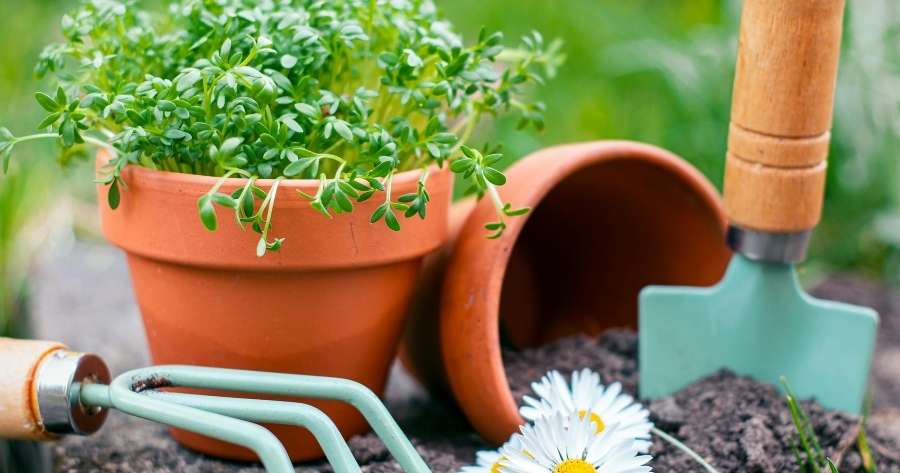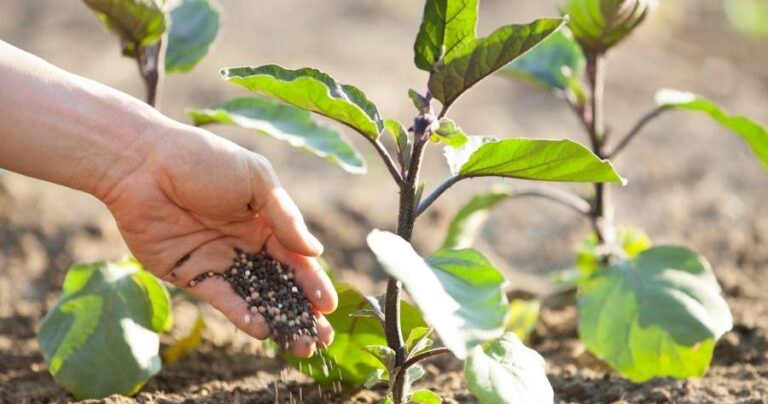
Organic Gardening Secrets No One Talks About
Organic gardening is often painted as a wholesome, back-to-nature practice that anyone can do with a little soil and sunshine. But beneath the surface, there are dozens of insider secrets—practices, methods, and natural hacks—that most gardeners either overlook or simply don’t share. These are the techniques that make the difference between struggling to keep plants alive and creating a lush, self-sustaining organic paradise that thrives season after season.
While mainstream advice covers compost, crop rotation, and mulching, the real game-changers in organic gardening often remain unspoken—passed quietly between experienced growers or tucked away in old gardening journals. Today, we’ll bring them out into the open.
This guide reveals organic gardening secrets no one talks about, broken into practical steps, insider tips, and lesser-known strategies that will help you grow healthier plants, save money, reduce pests naturally, and achieve the kind of soil fertility that keeps producing for decades.

The Underground Economy of Soil Microbes
Most gardeners hear “feed your soil, not your plants,” but very few understand just how powerful soil microbes are. Beneath your feet, billions of bacteria, fungi, protozoa, and nematodes are working in a complex food web. These microbes unlock nutrients, protect plant roots, and even communicate chemically with plants to help them resist pests.
- The Role of Mycorrhizal Fungi: These fungi attach themselves to plant roots, extending their reach by up to 700%. That means your tomato plant can access water and phosphorus it otherwise couldn’t. Adding mycorrhizal inoculants when planting is a secret that transforms root systems.
- Bacteria That Fix Nitrogen: Legumes like beans and peas aren’t just food—they’re nitrogen factories. The bacteria living on their roots capture nitrogen from the air and feed it into the soil. Interplanting legumes is a secret fertilizer hack.
- Protozoa Predation: Protozoa eat bacteria, releasing nitrogen in a form plants can absorb. This microscopic “predator-prey cycle” in soil biology is something most gardeners never consider but is central to soil fertility.
Avoid chemical fertilizers, which kill this delicate underground economy. Feed microbes with compost teas, worm castings, and decayed organic matter instead.
Dynamic Accumulators – Nature’s Free Fertilizer
Few gardening books talk about dynamic accumulators—plants that mine minerals deep from the subsoil and store them in their leaves. When cut and used as mulch or compost, they release these nutrients back into the topsoil where your vegetables can access them.
- Comfrey: Famous for pulling up potassium, calcium, and magnesium. Chop the leaves and lay them as mulch or make a compost tea.
- Yarrow: Brings up phosphorus and copper, boosts soil biodiversity, and attracts beneficial insects.
- Dandelions: Often seen as weeds, but their deep taproots bring calcium and iron up from below.
This is a hidden system of free fertilization that most modern gardeners ignore. Plant dynamic accumulators around your vegetable beds and you’ll have a constant nutrient pump feeding your soil.
Seed Soaking and Natural Priming
Professional growers rarely plant seeds dry. They know that priming seeds gives them a huge head start.
- Soaking in Compost Tea: A 12-hour soak in diluted compost tea coats seeds with beneficial microbes that protect seedlings from soil diseases.
- Chamomile Tea Trick: Organic gardeners quietly use chamomile tea to soak seeds. It contains anti-fungal compounds that reduce damping-off disease.
- Aloe Vera Gel: Aloe contains natural growth hormones. Soaking seeds in aloe vera juice speeds germination and improves root vigor.
This single step, done before seeds touch the soil, can double germination rates and lead to stronger, healthier plants.
Companion Planting Beyond Tomatoes and Basil
You’ve probably heard the common tips: basil helps tomatoes, marigolds deter pests. But the real insider knowledge lies in more complex companion planting systems.
- Trap Cropping: Instead of trying to eliminate pests, offer them a better option. Plant nasturtiums to lure aphids away from kale. Plant radishes to distract flea beetles from eggplants.
- Three Sisters Method: Corn, beans, and squash form a natural alliance—corn provides support, beans fix nitrogen, and squash shades the soil. Native communities used this for centuries.
- Living Mulch: Clover interplanted with vegetables suppresses weeds, fixes nitrogen, and prevents erosion.
Advanced companion planting creates a resilient ecosystem where pests are balanced by predators and nutrients cycle naturally.
Harnessing Urine as Fertilizer
This one makes some people uncomfortable, but experienced organic gardeners know the truth: diluted human urine is one of the best natural fertilizers.
- Urine is rich in nitrogen, potassium, and phosphorus—the same nutrients in chemical fertilizers.
- Dilution ratio: 1 part urine to 10 parts water. Apply to soil, not leaves.
- Best used on fruiting plants and leafy greens, but avoid on root crops right before harvest.
This is a centuries-old practice hidden under modern taboos, yet it’s free, sterile when fresh, and highly effective.
Lunar and Biodynamic Planting
Few organic growers talk about the influence of the moon phases and biodynamic principles. Yet many swear by them:
- Waxing Moon: Ideal for above-ground crops (lettuce, tomatoes).
- Waning Moon: Best for root crops (carrots, potatoes).
- New Moon to First Quarter: Strongest seed germination times.
Biodynamic gardeners also bury cow horns filled with compost, spray special teas, and time planting with cosmic rhythms. While controversial, many organic gardeners quietly admit that aligning with lunar cycles improves yield consistency.
DIY Fermented Fertilizers
Why buy expensive organic fertilizers when you can brew your own? Fermented plant extracts are a secret powerhouse.
- Korean Natural Farming (KNF) Techniques: Use lacto-bacillus serum to break down plant material into potent liquid fertilizers.
- Fermented Nettles: Stinging nettles soaked in water release nitrogen and trace minerals.
- Banana Peel Ferment: Banana peels in water ferment into potassium-rich liquid for fruiting plants.
These home brews are almost never discussed in mainstream gardening guides, but they’re used by advanced growers to create nutrient-rich, living fertilizers.
The Hidden Power of Mulch Diversity
Everyone says “mulch your garden,” but few explain the secret of mulch diversity. Using multiple mulch sources creates a richer soil ecosystem.
- Leaf Mold: Decomposed leaves create fungal-rich mulch.
- Straw: Great for weed suppression but needs nitrogen supplementation.
- Wood Chips: Feed fungal networks and protect soil moisture.
- Grass Clippings: Nitrogen boost but must be applied thinly to prevent matting.
The key? Layer different mulches-like a forest floor-to -mimic natural ecosystem.
Silent Soil Builders – Worm Farming
Earthworms are often mentioned, but few gardeners realize you can farm worms specifically to enrich your soil.
- Vermicompost: Worm castings contain beneficial microbes, enzymes, and nutrients.
- Leachate (“Worm Tea”): Liquid collected from worm bins makes a potent foliar spray.
- In-Situ Worm Beds: Instead of a bin, dig trenches in your garden, fill with organic waste, and seed with worms. They’ll turn it into rich humus directly under your plants.
Advanced organic gardeners use worms not just as helpers but as soil management partners.
Pest Control Through Habitat Creation
Instead of spraying for pests, create habitats for predators. This is the secret most books don’t emphasize enough.
- Insect Hotels: Bamboo, wood, and hollow stems attract bees, ladybugs, and lacewings.
- Water Sources: A shallow water dish with stones attracts beneficial wasps that eat caterpillars.
- Hedgerows and Wildflower Strips: Provide nectar for predatory insects and birds.
By creating a balanced ecosystem, pests rarely reach damaging levels.
The Hidden Art of Soil Layering (Lasagna Gardening)
Lasagna gardening is more than convenience; it’s a secret fertility hack.
- Layers of Browns and Greens: Alternate carbon-rich (leaves, cardboard) and nitrogen-rich (manure, food scraps) materials.
- Soil Inoculation: Add a layer of compost or finished soil between layers to jump-start microbial activity.
- Moisture Retention: Thick layers act like a sponge, storing water for dry periods.
This method creates ultra-rich soil without digging, making it one of the best-kept secrets in organic gardening.
Biochar – The Carbon Sponge
Biochar is ancient but rarely discussed among hobby gardeners.
- What It Is: Charcoal made from plant matter, charged with nutrients before adding to soil.
- Benefits: Increases soil fertility, holds water, reduces greenhouse gases.
- How to Use: Mix biochar with compost or urine before applying, otherwise it can absorb nutrients from your soil initially.
The Amazonians used it thousands of years ago to create terra preta, some of the most fertile soils on Earth.
Silent Watering Hacks
Watering is more than frequency. Secrets include:
- Clay Pot Irrigation (Ollas): Bury unglazed clay pots in soil. Fill with water. They slowly release moisture directly to roots.
- Hydrogels from Natural Sources: Instead of synthetic hydrogels, use water-retentive organic matter like sphagnum moss.
- Mulch-Soak Method: Water over mulch rather than bare soil to reduce evaporation.
These systems minimize water use while ensuring deep root hydration.
Saving and Selecting Seeds the Right Way
True organic gardening is about seed sovereignty, yet few explain the insider techniques:
- Fermentation for Tomatoes: Let tomato seeds ferment in their pulp before drying. This removes germination-inhibiting compounds.
- Selection Pressure: Save seeds only from the healthiest, most pest-resistant plants. Over time, you create your own locally adapted strains.
- Drying and Storing: Seeds last longer when dried to 8% moisture and stored in airtight containers with desiccants.
This practice ensures your garden gets stronger year after year.
Cover Cropping Beyond Clover
Cover crops aren’t just for farmers. They’re a hidden powerhouse for backyard gardens too.
- Buckwheat: Fast-growing, smothers weeds, attracts pollinators.
- Rye Grass: Builds root mass and prevents erosion.
- Daikon Radish: Breaks up compacted soil with giant taproots.
Instead of leaving soil bare in winter, cover crops protect and feed it naturally.
The Role of Sound and Vibration
This might sound unconventional, but some organic gardeners use sound and vibration to stimulate plant growth.
- Studies suggest plants respond to certain frequencies of sound.
- Gardeners report stronger growth when plants are exposed to soft music or vibrations.
- While still debated, it’s a secret many experimental growers quietly swear by.
Hugelkultur – Raised Beds That Feed Themselves
A hidden European practice, hugelkultur is building raised beds over logs.
- Logs and Branches: Bury under soil. They slowly decompose, releasing nutrients.
- Moisture Retention: Logs act like sponges, storing water.
- Long-Term Fertility: Beds feed themselves for years without added fertilizer.
This creates deep, fertile beds ideal for organic gardening.
Wild Plants as Allies
Many wild plants often dismissed as weeds actually help your garden.
- Plantain: Heals compacted soil and attracts beneficial insects.
- Chickweed: Indicates fertile soil and can be used as living mulch.
- Lamb’s Quarters: Edible and accumulates minerals.
Knowing your “weeds” can turn them from enemies into allies.
Timing Planting with Weather Patterns
Most gardening calendars ignore local microclimates. The secret? Plant by soil temperature and local cues.
- Forsythia Bloom: Plant peas when forsythia blooms in spring.
- Soil Thermometer: Seeds germinate best at specific soil temps—lettuce (40–70°F), beans (70–90°F).
- Microclimates: Use walls, rocks, and hedges to create warmer or cooler garden zones.
This approach outperforms generic calendars.
The Psychology of Gardening Energy
Here’s a secret most ignore, plants reflect the energy of their caretaker.
- Studies show reduced stress hormones in gardeners directly benefit plants.
- A calm, consistent gardening routine creates healthier gardens.
- Mindfulness in the garden, observing, listening, adjusting, leads to insights chemical growers miss.
Organic gardening is as much about the gardener as the plants.
Conclusion
Organic gardening is more than avoiding chemicals; it’s about working with nature’s hidden systems. From microbes and mulch diversity to dynamic accumulators and seed priming, the real secrets lie in subtle practices most guides overlook.
By applying these under-the-radar techniques, you’ll build soil that keeps getting richer, plants that resist disease naturally, and a garden that becomes increasingly self-sufficient year after year.
These aren’t just tips; they’re the keys to transforming your garden into a thriving ecosystem that nourishes both plants and people.




